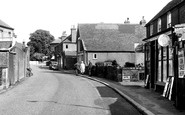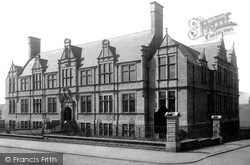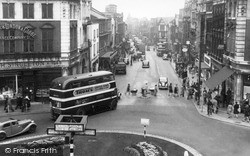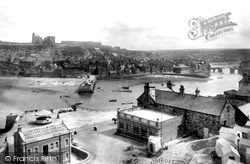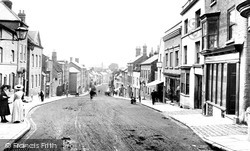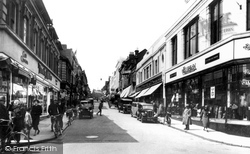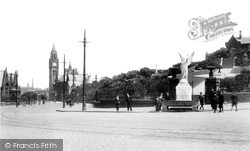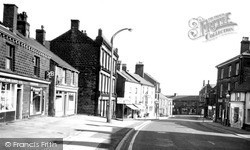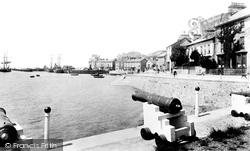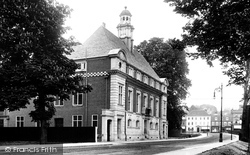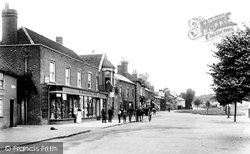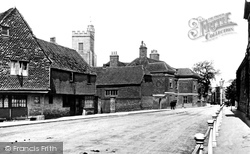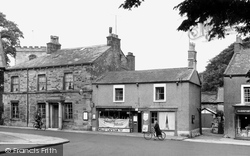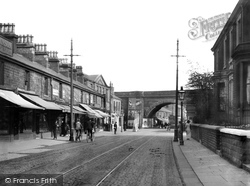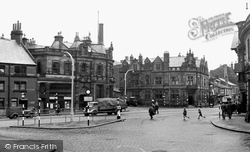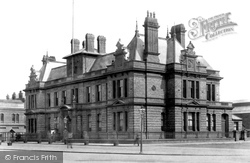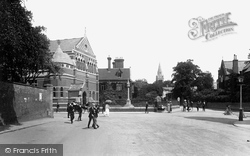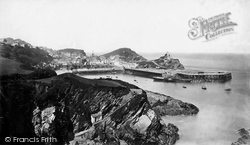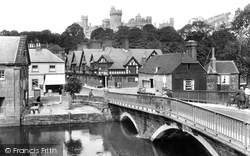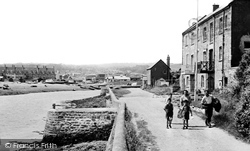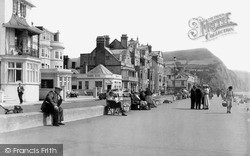Places
26 places found.
Those places high-lighted have photos. All locations may have maps, books and memories.
- Town End, Derbyshire
- Town End, Buckinghamshire
- Town's End, Somerset
- Towns End, Dorset
- Town End, Merseyside
- Town End, Cambridgeshire
- Town's End, Buckinghamshire
- West End Town, Northumberland
- Bolton Town End, Lancashire
- Kearby Town End, Yorkshire
- Town End, Cumbria (near Grange-Over-Sands)
- Town End, Cumbria (near Bowness-On-Windermere)
- Town End, Yorkshire (near Huddersfield)
- Town End, Yorkshire (near Wilberfoss)
- Town End, Cumbria (near Appleby-in-Westmorland)
- Town's End, Dorset (near Melbury Osmond)
- Town's End, Dorset (near Swanage)
- Town End, Cumbria (near Ambleside)
- Town End, Cumbria (near Lakeside)
- Town End, Cumbria (near Kirkby Lonsdale)
- Town End, Cumbria (near Ambleside)
- Town's End, Dorset (near Bere Regis)
- West-end Town, South Glamorgan
- Townend, Derbyshire
- Townend, Strathclyde (near Dumbarton)
- Townend, Staffordshire (near Stone)
Photos
26 photos found. Showing results 2,501 to 26.
Maps
195 maps found.
Books
160 books found. Showing results 3,001 to 3,024.
Memories
3,719 memories found. Showing results 1,251 to 1,260.
It Was No Surprise
It was at Insh carnival where my disabled wife and I and our two month old daughter went, simply to spend a few hours from our home village of Inverurie. There were the usual sorts of entertainments such as pipe bands and the ...Read more
A memory of Muirtown in 1990 by
The Flying Fortress Crash
I remember, during the war, two flying fortresses crashed in Hordon. One came down near the Half Way House, the other one in a field in Chiderditch behind the pub. They were returning from a bombing raid on ...Read more
A memory of West Horndon in 1940 by
Levenshulme
I remember my earliest memories of Levenshulme (where I have lived for the past 15 years) was as a boy of about 4 or 5 in the early 1970s, going to the dairy on Lloyd Road where the bus terminus was - with my grandfather and also ...Read more
A memory of Levenshulme in 1970
Family Home
Ahh Instow.. Always in my heart. Gran moved from Plymouth to Bickleton (2mls inland from Instow) c1930. Mum (Nancy Rooke) went to Instow school. During the war years she met Dad (Ron) married (1942) and moved to Staines where I grew up. ...Read more
A memory of Instow by
Memories Of Langton Green And Rusthall
I was born at 3 Dornden Cottages in June 1942. My father (Charles Harris) was Chauffer to Mr Coombe at Dornden. Unfortunately Mr Coombe died around 1947 and we had to move out of our cottage as it was ...Read more
A memory of Langton Green in 1942 by
School
I remember Our Lady and St Joseph's school and Mrs Clinton the primary one teacher. I lived in Annathill and traveled by bus every day. The Chapel was up the hill from school and I can remember making my first communion there. I can ...Read more
A memory of Glenboig in 1968 by
A Long Long Time Ago
We were a dyed in the wool London family, some time before World War 11, 1939, we moved from Earlsmead Road to Breamar Road off West Green Road and lived there at number 73 untill 1951, when we moved out into the country to ...Read more
A memory of Tottenham in 1951 by
Childhood In Minster
My two brothers, my sister and I were all born in Minster in what is now called Turner Cottage but was then "The Swifts". My granddad was a village postman and my best friend's granddad was also a postman and we ...Read more
A memory of Minster in 1968
Kennoway Den
Hi, school holidays down the den consisted of endless hours playing comandoes and building the dam at the Ladies Brig, Eddie Thacker the Mackays, Tommy Johnstone, Gareth Bruce, Shug Torrance, Harry Caulder, Podge Allan, Frogy and ...Read more
A memory of Kennoway in 1964 by
Schooldays
I was lucky to live in Portpatrick - my father came to HM Coastguard Station in 1953. We had come from Australia, and it took my mother some time to settle in, I think: she was a town girl through and through. My sister and I felt ...Read more
A memory of Portpatrick by
Captions
5,111 captions found. Showing results 3,001 to 3,024.
Built from the bricks for which the town is famous, it cost £13,000, of which the Corporation borrowed £10,000.
In the early 20th century, when Beoley was still completely rural, The Village Inn used to be a popular destination for people venturing out of town by horse-drawn carriage or by bicycle.
In the early 20th century, when Beoley was still completely rural, The Village Inn used to be a popular destination for people venturing out of town by horse-drawn carriage or by bicycle.
The Helen Garden, opened in September 1933, was given to the town by the late Mrs Helen Reid Stewart Hornby Lewis, as a plaque informs us.
From 1938 to 1966 Market Gate roundabout, seen in the foreground, attempted to speed the flow of traffic on the A49 and A57 routes through the town centre.
The square building to the left of the bridge is the old Market Hall which later became Town Tailors and then Burberrys, both providing welcome employment locally.
The photographer was standing on the position of the old town wall/boundary. Beyond the wall there would have been more room to spread out, and so immediately the road becomes much wider.
One of the main shopping streets of the town, this photograph of Union Street conveys something of the bustling nature of the area.
In the gardens, and to the left of the statue, stands the obelisk erected to the memory of the town's dialect poets Margaret Lahee, Oliver Ormerod, Edwin Waugh, and John Trafford Clegg.
It was not always quiet on the streets of Penistone; until 1910 cattle and sheep were sold in the streets on Thursdays, and many a deal was struck over a pint or two at the Spread Eagle Hotel.
The town relied on the sea for employment, and it was once an important rival of Holyhead for the Irish ferry.
Still alone and flanked by old trees from the carriage drive to Wycombe Abbey, the Town Hall is two years old in this view, a fine building in Queen Anne style.
A picturesque collection of cottages and shops line the spacious main street of this Georgian coaching town, as we look towards the triangular Bowling Green, while the photographer's activities attract
This country town is close to one of the noblest houses in Kent - the Jacobean home of the Sackvilles, Knole. St Nicholas's Church (left) has a 90ft-high tower and turret with a cupola.
At one time, Co-op shops stood in most towns and even some villages, this one belonging to the Society at nearby Carnforth.
The railway line to Huncoat and Burnley crosses the road here.There was at one time another line down to Rawtenstall, joining what is now the East Lancashire Preserved Railway.As well as having three
The Circus, in the town centre, is where five roads meet. It has the usual mixture of banks and public houses on its corners.
The Town Hall was built in 1887 in a style described as 'French Renaissance'. The building was used briefly in the 1980s to house the Halton Chemical Industry Museum.
The school was originally located in premises opposite the parish church, but had moved to its present site to the south of the town by 1750; rebuilding began in 1809.
At the top of Lantern Hill (centre right), 100 feet above sea level, stands the Chapel of St Nicholas, patron saint of sailors, fittingly enough, and also of scholars.
Full of quaint old Georgian houses and historic buildings, Arundel has long been an obvious destination for tourists and visitors.
The long stretch of the River Axe between Axmouth and Colyford is an excellent habitat for wildfowl, and birdwatchers often line the riverbank in the early months of the year.
Just beyond the Marine Hotel is the site of the Sidmouth Brine Baths, where visitors to the town could have massage and 'electrical treatment' - probably a low current passed through the
The old city of Hereford was contained by the River Wye to the south and the town walls to the north.
Places (26)
Photos (26)
Memories (3719)
Books (160)
Maps (195)


